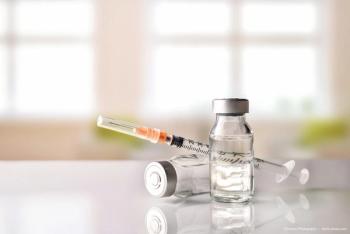
- Ophthalmology Times: January 2021
- Volume 46
- Issue 1
Physicians discuss advancements in the treatment of wet AMD
While current treatments are good, the best is yet to come.
Leading retina specialists focusing on the treatment of
The panel was moderated by Caroline R. Baumal, MD, a professor of ophthalmology at Tufts University School of Medicine in Boston. The panel also included Thomas Albini, MD, professor of ophthalmology at Bascom Palmer Eye Institute, Miami; Aleksandra Rachitskaya, MD, assistant professor of ophthalmology at the Cole Eye Center in Cleveland, Ohio; and Michael Singer, MD, professor of ophthalmology at University of Texas San Antonio.
Baumal pointed out a hallmark of wet macular degeneration is choroidal neovascularization and the pathophysiology of
“This makes for a really complex mechanism involving metabolic, functional, genetic, and environmental factors,” she said. “There is so much that we need to know about AMD and why
A few trends in AMD are becoming more apparent, the first being the increasing prevalence in the aging population.
Albini pointed out that AMD is “exploding” and may double over the next 2 decades. The current estimates are that between 10-11 million Americans are affected with all forms of AMD, with wet AMD accounting for probably 10% of that, he explained.
Rachitskaya said she is seeing older patients who present with more advanced disease, such as neovascular AMD or even more geographic atrophy than ever before. People with a history of smoking or who are active smokers are at a higher risk.
Her typical patients usually have 20/40-20/60 vision and the current treatments are very effective.
Related:
She also noted that she sees older patients who present with very advanced wet AMD, and despite effective treatments, their vision is not restorable as effectively as with early presentation. Singer reported that other trends are shot fatigue and compliance issues.
Treatment
The basic treatment approaches are monthly regimens, as-needed injections, and treat-and-extend.
Rachitskaya prefers treat-and-extend to keep retinas as dry as possible, while Albini said his treatment decisions are patient-specific considerations that he combines with treat-and-extend.
Singer said he tends toward patient-specific decisions, adding that he finds that in many cases he is hampered by insurance coverage demanding step therapy.
He prefers using the branded drugs because of better retinal drying, which is an objective measure on optical coherence tomography (OCT). When a retina is dry, he said he extends the treatment interval.
The anti-vascular endothelial growth factor (VEGF) drug used most often to treat AMD is bevacizumab (Avastin, Genentech Inc), as an off-label intravitreal injection.
Related:
The advantages, Albini said, are that it is aliquoted, cheaper that other FDA-approved agents, and is not inferior to ranibizumab (Lucentis, Genentech Inc), the first FDA-approved agent still used; no differences are seen between them when administered as-needed.
Aflibercept (Eylea, Regeneron), also non-inferior to ranibizumab, is perhaps the most commonly used FDA-approved drug in the US; many physicians may favor aflibercept because of its slightly better drying potential, resulting in longer treatment intervals.
Brolucizumab (Beovu, Novartis) was approved recently for wet AMD, but a downside is the higher overall inflammation rate compared with aflibercept, which has affected its widespread acceptance.
Albini noted that brolucizumab may have even better drying power and even better durability; it is a smaller molecule, which permits more molecules to be injected thus extending the half-life and decreasing the injection burden.
Rachitskaya said she appreciates the availability of these drugs, but is looking ahead to newer technologies to alleviate injection burden, such as new injectables, combination therapies, or a therapy such as a core delivery system or gene therapy.
Until these technologies arrive, she said she encourages patients about their treatment status to bolster compliance.
Related:
Safety is always a concern with intravitreal injections. For Albini, one consideration is the risk of endophthalmitis, despite the low incidence. Discussions with patients are important and should include retinal detachments and vitreous hemorrhages.
Intraocular inflammation is often being discussed because of the occurrence of severe cases with occlusive vasculitis with brolucizumab. OCT has added to the safety of injections and facilitates guided injections based on the anatomy visible on the scans, he said.
Some physicians administer bilateral injections to treat
Regarding bevacizumab, Albini noted that physicians should trust the source of the drug because of cluster outbreaks of Streptococcus endophthalmitis cases.
New technologies
Development of biosimilar drugs is a new technologic spin that is envisioned to eventually play a larger role in the US.
The concept of biosimilar formulations has come to the fore because the patents on the drugs currently used to treat are expiring, which raises the question about new biosimilars coming to market and their costs.
Related:
According to Rachitskaya, current
“Biosimilars are not intended to be carbon copies of aflibercept or ranibizumab; they are similar and provide the same therapeutic endpoint, in contrast to generic drugs that are carbon copies of the original drugs,” she said.
Singer mentioned faricimab (Roche), an Ang-2 blocker that is combined with ranibizumab in 1 molecule for vessel stabilization. This drug has shown good results in the STAIRWAY, TENAYA, and LUCERNE trials.
The Port Delivery System with ranibizumab (Genentech) provides continuous drug release over time, with the vast majority of patients did not need refills before 6 months. Results show less macular atrophy than monthly injections.
KSI-301 (Kodiak Sciences), is an antibody biopolymer conjugate, that uses a large molecular structure to bind to and inhibit VEGF; in a Phase I study about 44% of patients had an extended duration of action out to 6 months.
Albini said he is looking forward to upcoming gene therapies that use various vectors to manipulate the retinal pigment epithelial cells, photoreceptors, or other ocular cells to make the drug continuously perhaps as the result of a 1-time delivery.
Related:
Singer looks forward to at-home OCT monitoring, which he envisions will facilitate longer periods between injections and patients will be able to advise physicians when an injection is needed. The Notal OCT Analyzer (Notal Vision) is 1 such device.
Generally speaking, the consensus is that the future for neovascular AMD is promising.
“There is an amazing group of drugs from which to choose compared with a decade ago and they improve over time. It is an amazing era and has been a huge change for ophthalmology,” Albini concluded.
--
Caroline R. Baumal, MD
e:[email protected]
Baumal has no financial disclosures related to this content.
Thomas Albini, MD
e:[email protected]
Albini has no financial disclosures related to this content.
Aleksandra Rachitskaya, MD
e:[email protected]
Rachitskaya has no financial disclosures related to this content.
Michael Singer, MD
e:[email protected]
Singer has no financial disclosures related to this content.
Articles in this issue
over 4 years ago
Research is unfolding the proteins in retinitis pigmentosaalmost 5 years ago
Developments in glaucoma offering hope, optionsalmost 5 years ago
Anti-VEGF medications may cause systemic complications in ROPalmost 5 years ago
Harnessing 1-2 punch of KAMPs for corneal infection, inflammationalmost 5 years ago
Study: Innovative dexamethasone formulation shows efficacy, safetyalmost 5 years ago
Transscleral laser therapy device simplifies procedurealmost 5 years ago
It takes a village to beat visual system diseases in childrenalmost 5 years ago
The value of new diagnostics and personalized medicineNewsletter
Don’t miss out—get Ophthalmology Times updates on the latest clinical advancements and expert interviews, straight to your inbox.



















































.png)


